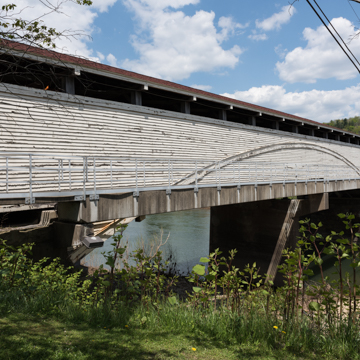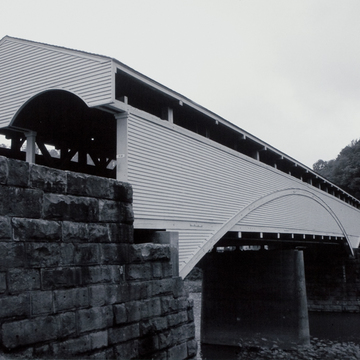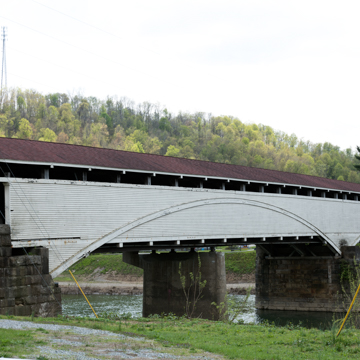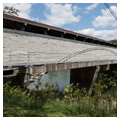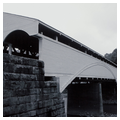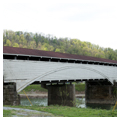Philippi's best-loved landmark is significant on many counts. Dating from 1852, it is one of only a handful of two-lane (“double-barrel”) covered bridges in the nation, and it is the only one still carrying a U.S. highway. It was built to carry the Beverly and Fairmont Road, a feeder to the Staunton and Parkersburg Turnpike, over the Tygart Valley River. The oldest and longest of West Virginia's covered bridges, it is the most important work of Lemuel Chenoweth, western Virginia's noted mid-nineteenthcentury bridge builder.
The bridge is constructed of yellow poplar and consists of two spans with arches 138 feet long. Chenoweth used Long trusses, a system of crossed diagonals designed and patented by Stephen Long in 1830. Similar to the more familiar Howe trusses, except that they do not use iron, Long trusses are especially effective in long spans. In the 1930s, the foundations and flooring were strengthened with concrete, and two intermediary concrete piers were added for support. A covered walkway was added to the south side, and the portals at each end, originally rounded, were squared to accommodate large trucks.
On February 2, 1989, the bridge caught fire when a gasoline overflow at a nearby service














